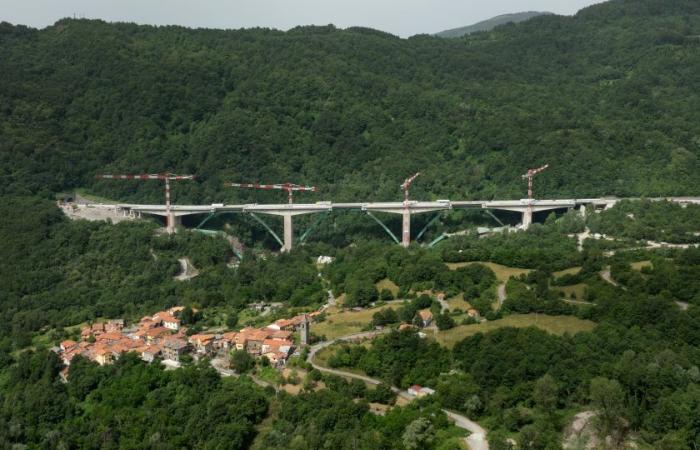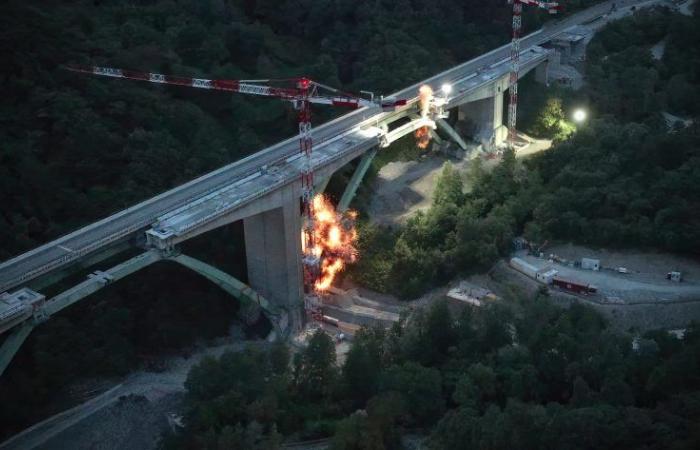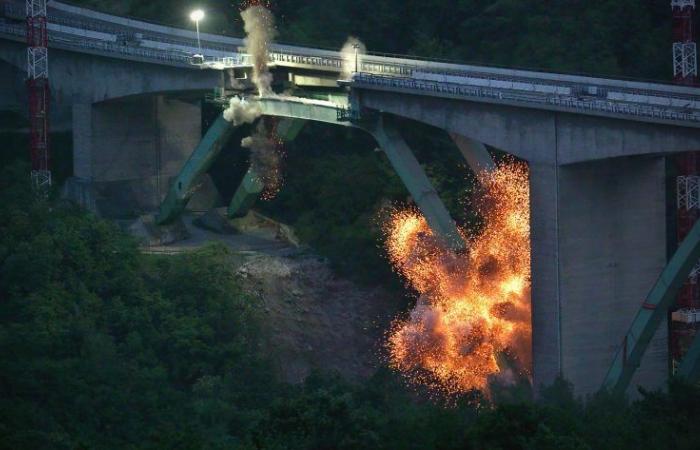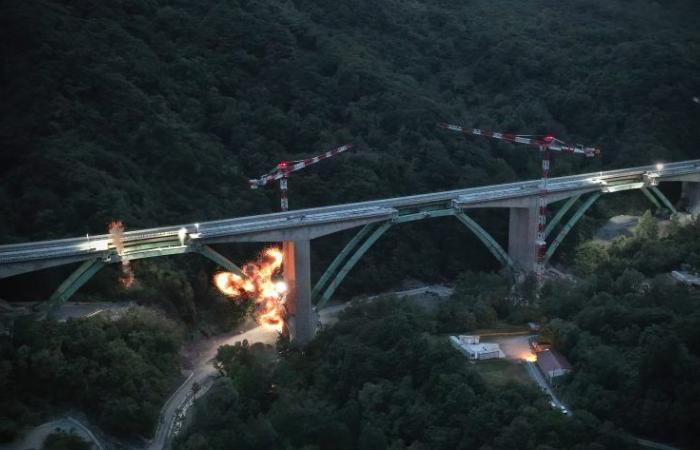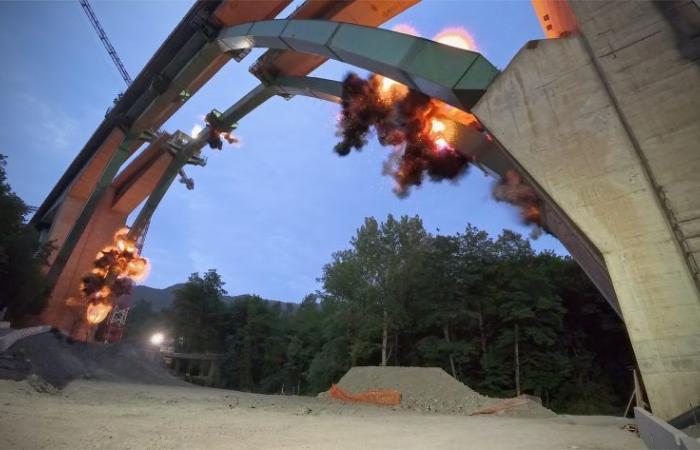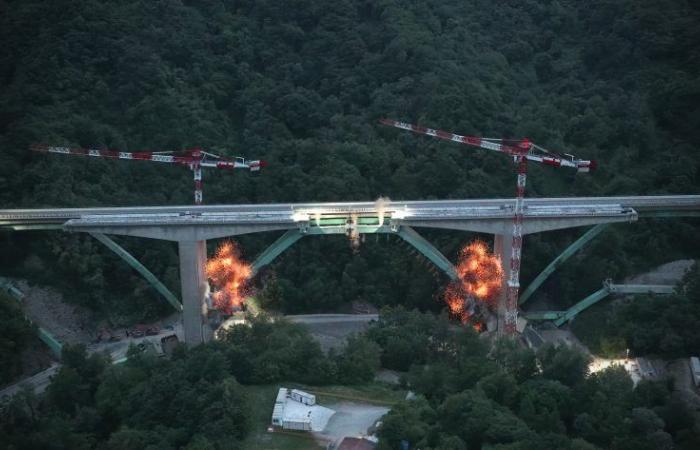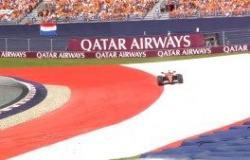The spectacular demolition using explosives was successfully completed of the three metal arches to support the decks of the Northern carriageway, already subject to partial demolition, of Gravagna Viaduct on the A15 Parma – La Spezia. The activity, which took place starting from 19 June and involved over 60 people under the direction of ITINERAthe company responsible for carrying out the works, is part of the demolition and reconstruction works of the viaduct as part of the broader modernization plan of the section managed by SALTmotorway concessionaire of the ASTM Group, to adapt the infrastructure to the highest quality and safety standards.
The A15 motorway is in fact characterized by a high number of viaducts (177), overpasses (38) and tunnels (36) built with approaches and design logics different from those of today and on the basis of traffic loads that are decidedly lower than the current ones, in terms of entity and frequency. An iconic work built in the early Seventies between the Pontremoli and Berceto toll booths, the Gravagna Viaduct has been the subject of numerous maintenance and adaptation activities over the years. The 6 metal arches, known as crutches, were installed in 1993 to completely restore the efficiency of the work thanks to a permanent support of the spans thanks to 6 large steel portals whose piers, spreading out, come to rest on the bases of the piers. Made of steel and weighing approximately 400 tons each, they have a variable length between 45 and 62 meters.

The demolition works began in the autumn of 2023. A particularly delicate phase involved the removal of the 3 portals supporting the northern carriageway. The explosive charges were detonated during the nights of 19 and 20 June, guaranteeing safety conditions for operators and users, with traffic closed. The charges were positioned in five points inside the metal boxes. The cuts were made in the center line of the portal’s flying buttresses in a horizontal and vertical direction, to allow them to fall to the ground by gravity. The part of the arch most in direct contact with the road deck has been weakened so as to prevent the involvement of the homologous portal on the opposite roadway, as well as minimizing the stresses transmitted to the hinges of the portals and, consequently, to the piers. Outside the cutting area, a protection was created consisting of alternating bags of sand and water.
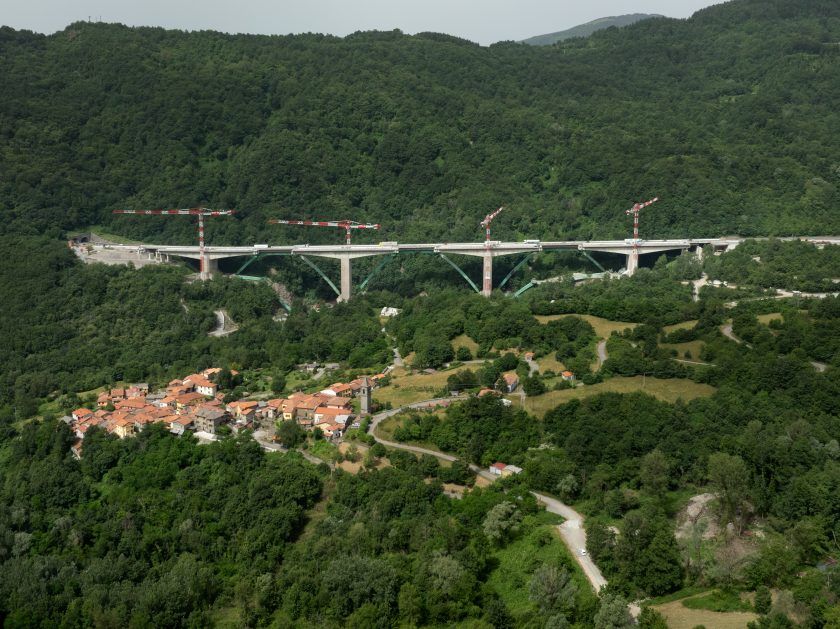
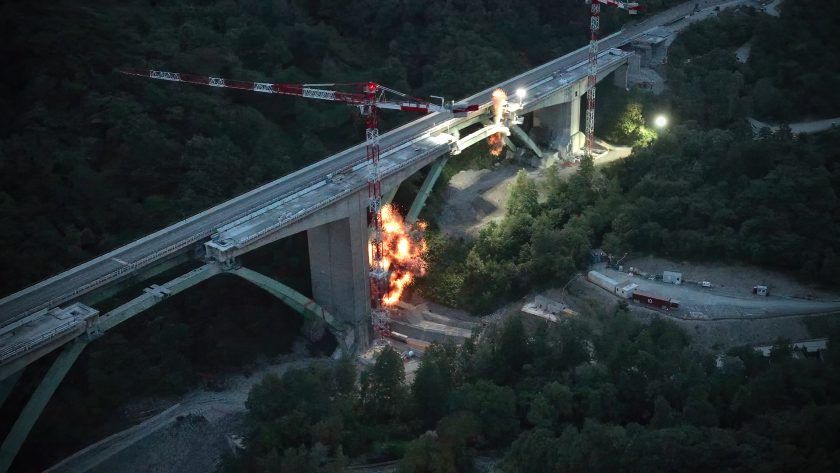
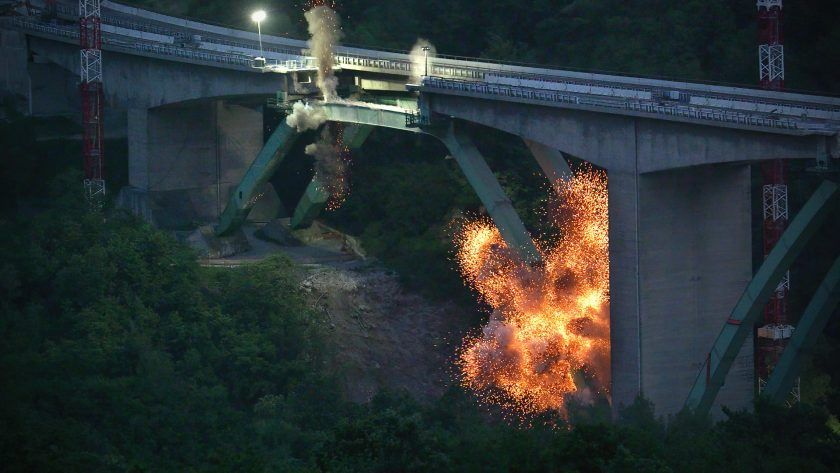
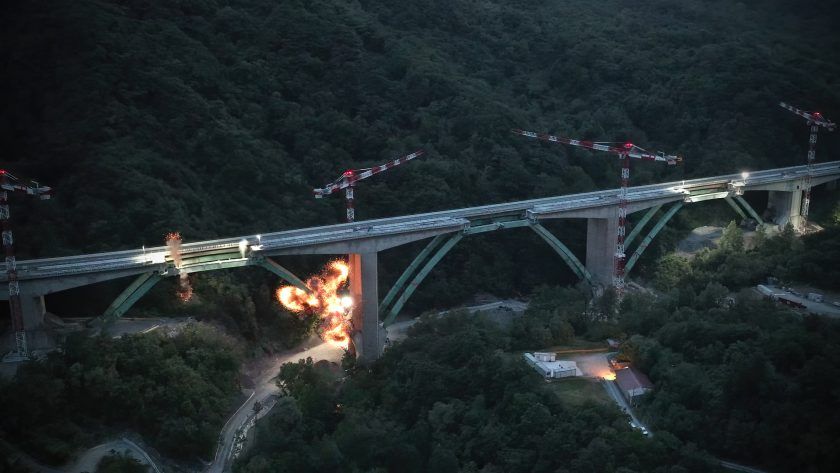
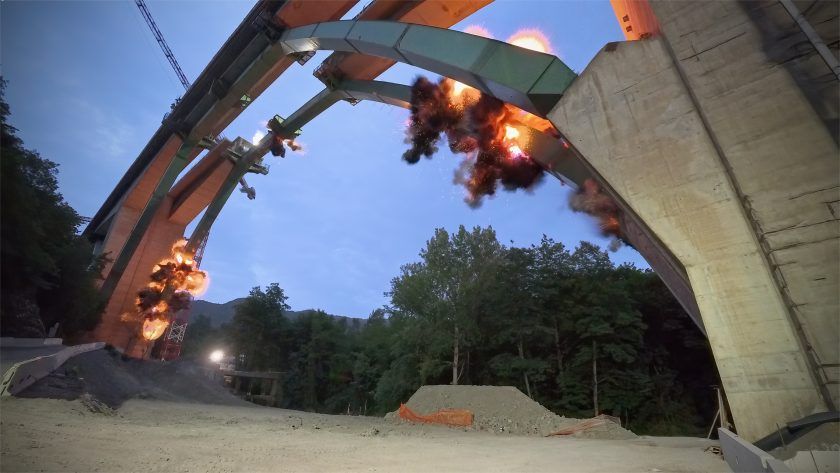
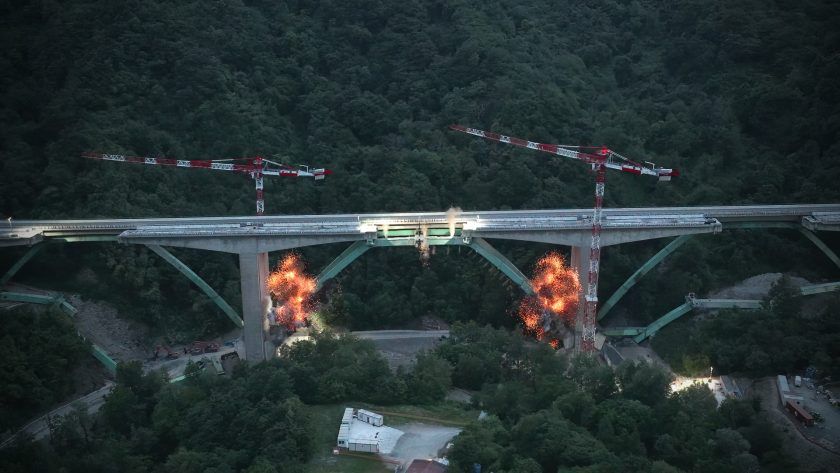
A monitoring system has been installed consisting of approximately 90 inclinometers and approximately 90 accelerometers positioned on piles and decks, both of the North and South streets, with the aim of monitoring the effects of demolition on both the piles and the deck of the South street. , to verify that the shock wave did not create excessive stress towards the structural parts yet to be demolished. At the end of the demolition, load tests were carried out. Given the high weight of the demolished portions of the arch (approximately 160 t each), technical estimates were carried out on the effects produced by the fall of the portals after demolition with explosives. The portions of the arch, falling to the ground, generate vibrations that could affect the foundations of the piles or other structural elements. To dampen the effect of the fall, dunes of inert material were used to absorb the vibrations induced by the impact on the ground.



